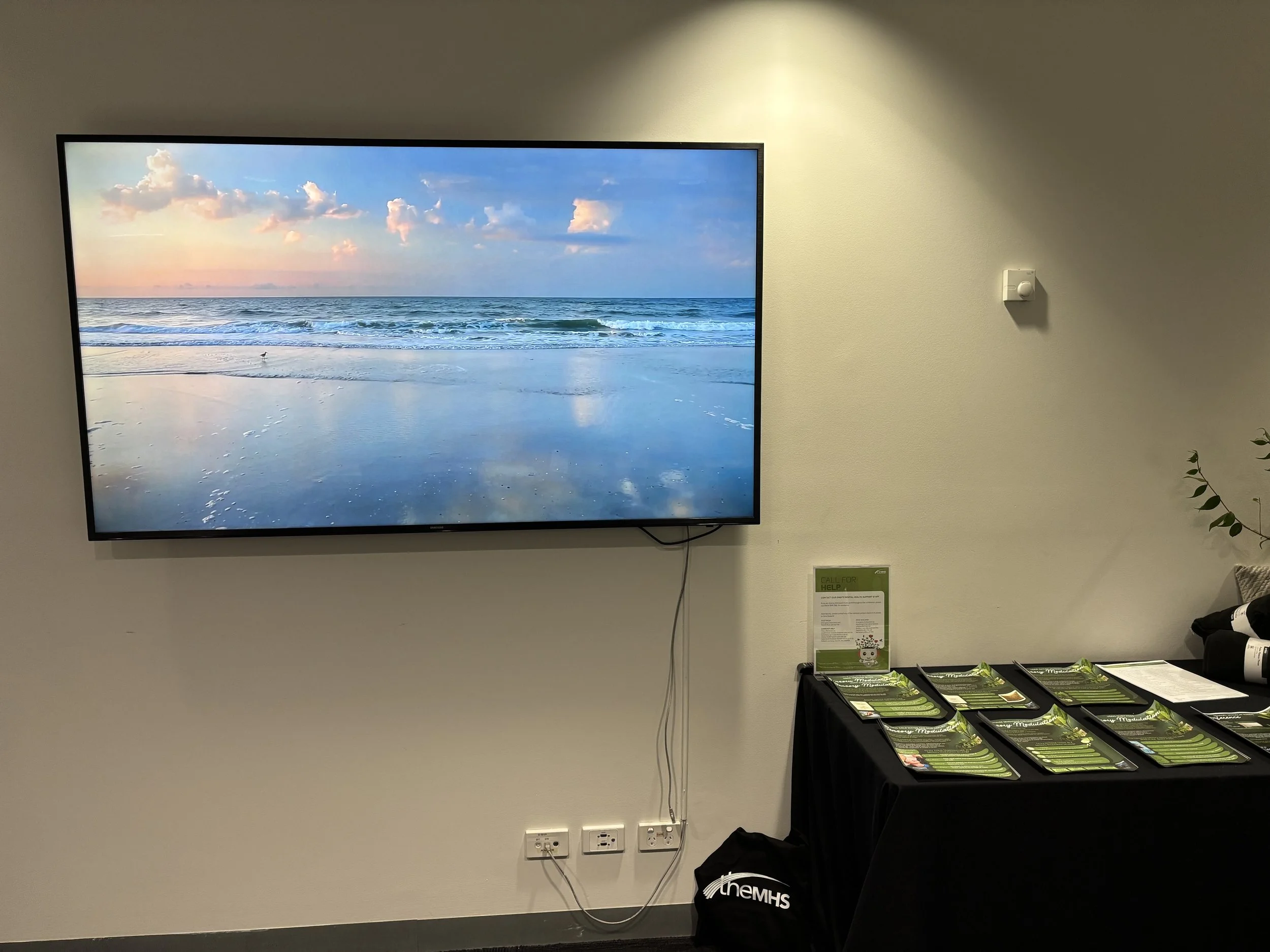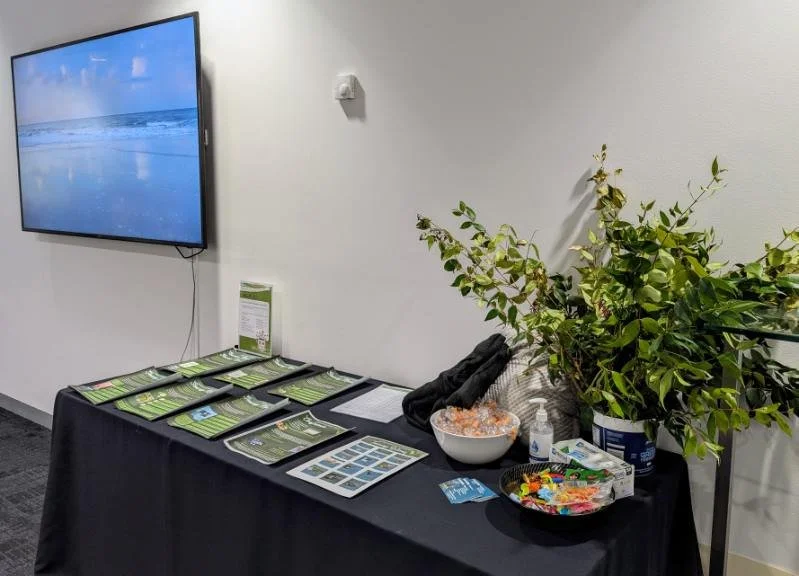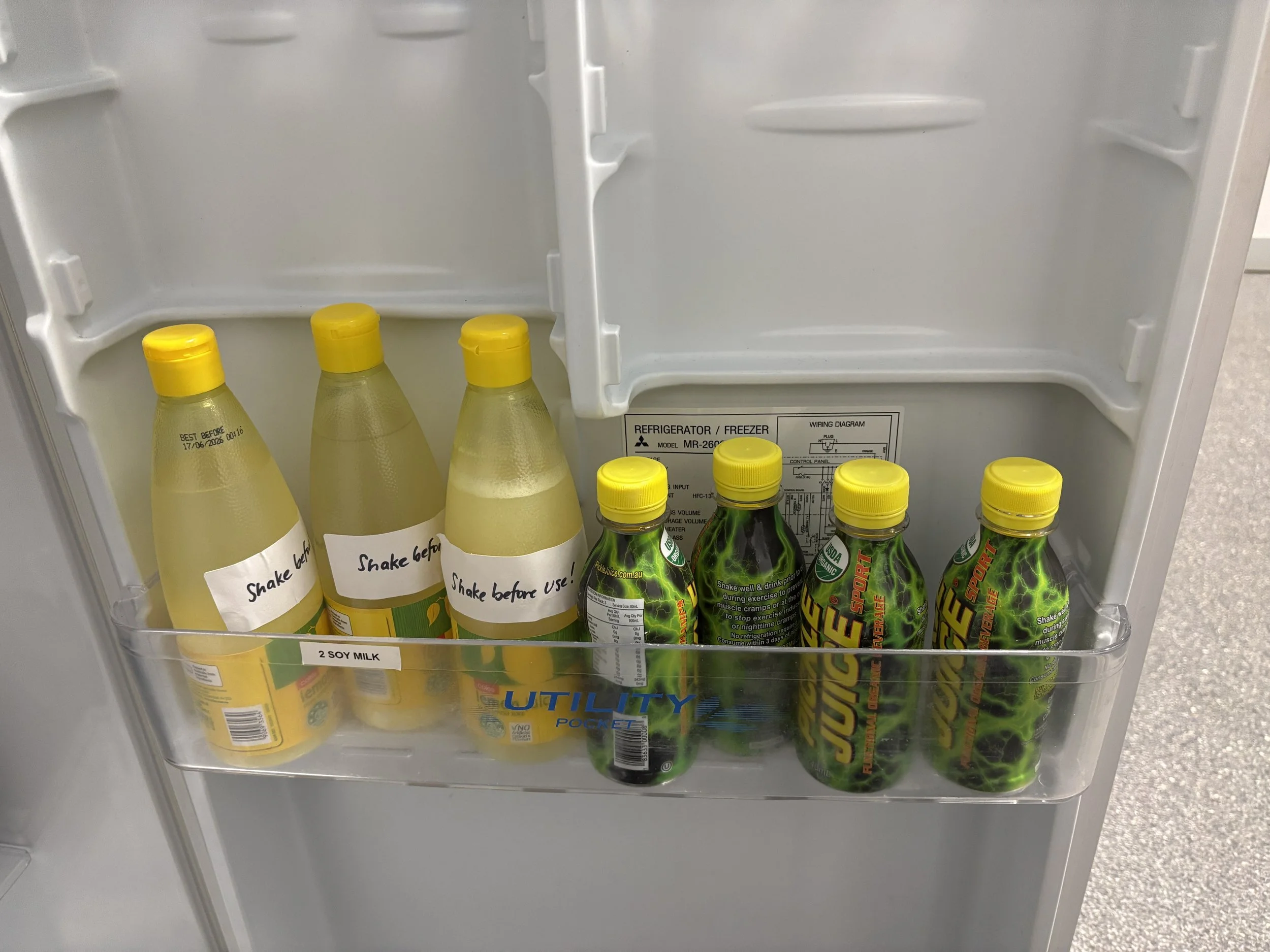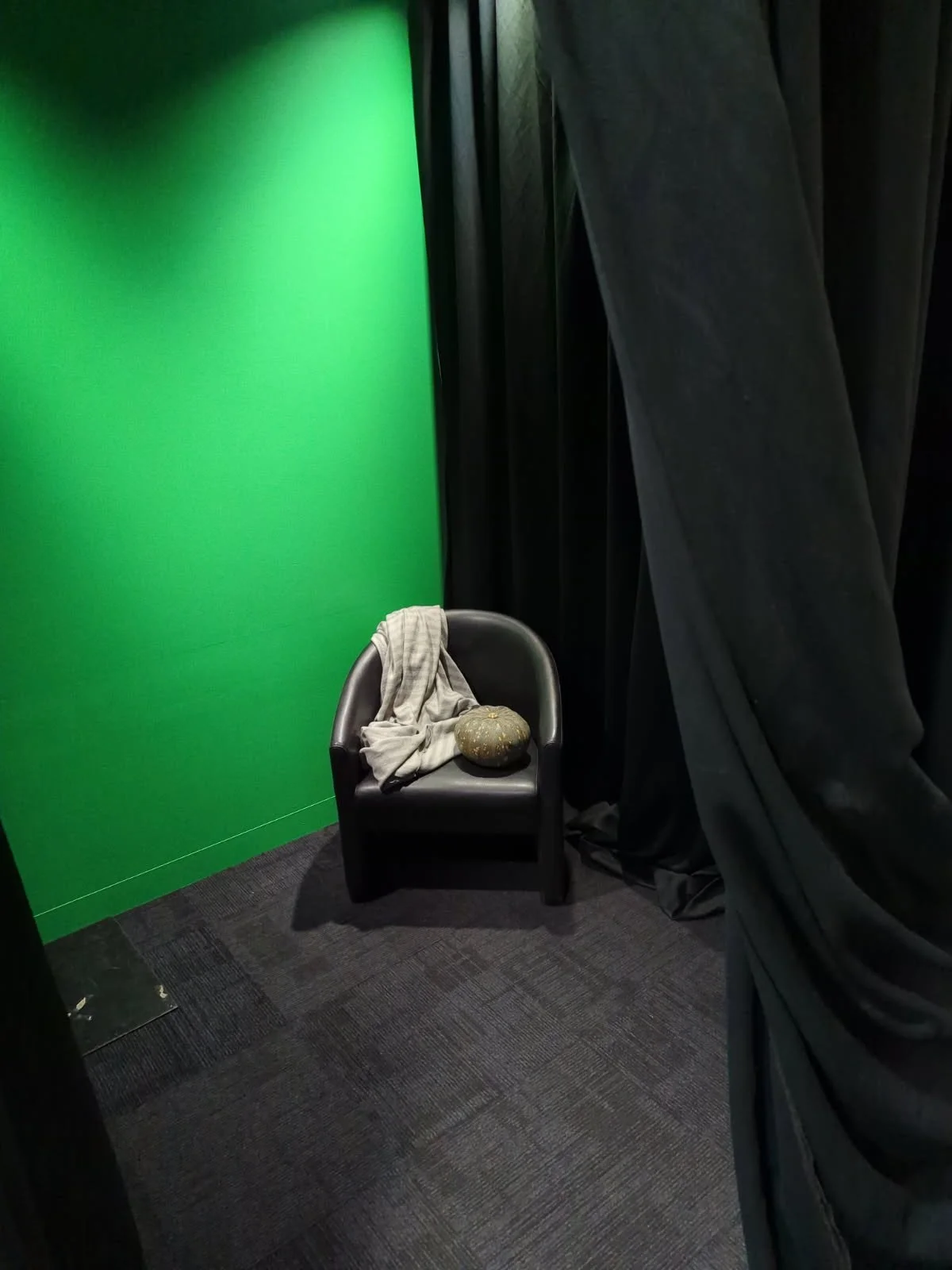Sensory Spaces at TheMHS 2025
Sensory Modulation Brisbane was delighted to be asked to design and support the Sensory Spaces at the TheMHS Conference this year.
Description of the TheMHS Sensory Spaces
The sensory spaces offered opportunity for delegates to take time away from the conference environment and access spaces with reduced sensory input (noise, people traffic, light levels, absence of food scent). People could also engage in other sensory input of their choice including representations of nature, deep pressure, warmth, creativity, tactile input, strong taste & auditory (using their own device & ear set).
It gave people the ability to take breaks from the conference when needed, move away from sensory input they may have been finding ‘too much’ or overwhelming and move towards space/s that helped them recharge and reset to return to the conference feeling more grounded and regulated.
The 3 distinct sensory areas for delegates to utilise –
1. GREEN SENSORY ROOM – a shared "chill out’ space with comfortable seating and representations of nature (greenery, a large monitor with rainforest scenery and artificial grass on the floor). People had access to a range of sensory modulation strategies if desired such as weighted items, blankets, application of cold temperature and intense tastes.
2. QUIET SENSORY PODS – three private spaces each offering reduced light and noise levels. People could also access preferred sensory input such as weighted objects, fidget items, select intense sensations (cold temperature, lemon or pickle juice) and listening to preferred sounds with their own phone and ear sets.
3. SENSORY CREATIVE ROOM – a large shared room to quietly engage in a range of creative sensory input (such as make your own fidget items, drawing and colouring and nature collages).
Delegates were also able to try a variety of intense sensations which can help reduce stress, lower anxiety levels and promote feelings of grounding –
Cold temperature to elicit the dive reflex – delegates h ad access to small ziplock bags containing very cold water, and were provided with instructions to place the bags under their eyes and hold their breath for a few times.
Sips of pickle juice and lemon juice - delegates were able to try sips of these intense flavours, which work quickly to help with grounding.
The thinking behind the design of the TheMHS Sensory Spaces
Sensory Modulation Brisbane understands the value and importance of showcasing sensory spaces/environments that feel familiar and home-like, with items that are affordable, relatable and easy to obtain and use in everyday life – this makes the strategies more transferrable and so much easier for people to adopt outside of the Conference.
Our goal was for people to experience the sensory spaces and think ‘I can easily do this for myself when I get home!’
We also wanted to highlight and encourage the use of natural and environmentally sourced options, for example using elements of nature (leaves, flowers, pods, twigs) to create artistic collages, making your own fidget items with smooth pebbles and wood and using a bag of rice or pumpkin as a weighted item. This helps people to access the resources around them thus increases the applicability of the strategies as well as reducing unnecessary waste.
It was important for the sensory room to remain quiet, offering people a break from noise and stimulation. To support this, signage and messaging clearly highlighted that it was a quiet space. Simple instructions were provided for each sensory item to minimise the need for conversation, and some items were arranged as visual examples to show how they could be used
How the Sensory Spaces were utilised
It was evident from Day 1 that the Sensory Spaces were extremely well utilised during the TheMHS Conference. While many delegates took the opportunity to visit the areas, observe the different spaces and curiously trial some of the sensory strategies on offer, a large proportion of people were noted to return on multiple occasions over the week. It seemed having these spaces available were valuable to take time to step away from the business and pace of the Conference and have the opportunity and means to be able to change how they were feeling.
The Green Sensory Room and the Quiet Sensory Pods were observed to be the most frequently visited spaces with many people commenting on how beneficial they were.
Feedback from Delegates
Sensory Modulation received overwhelmingly positive comments and feedback regarding the Sensory Spaces, including -
· Delegates reported to feel very welcome and at ease in the spaces
· Delegates appreciated the ‘familiar’ and ‘home like’ feel of the spaces which promoted a feeling of safety and ease in these environments
· Delegates valued the opportunity to be able to access a space with less sensory input and add in their preferred sensory input if they wanted
· Many delegates enjoyed the opportunity to try the intense sensations as these strategies were less familiar to them
· Delegates were receptive to the strategies being so practical and affordable and therefore easy to source and use outside of the Conference.
Training
Sensory Modulation Brisbane has designed a webinar which provides more information on Sensory Spaces Design and Equipment.
Other Resources
There is more information in the following pages:
Free Resources - see checklists
Blogs - read more information on the strategies
Training - Learn more















